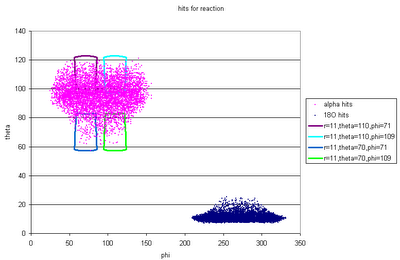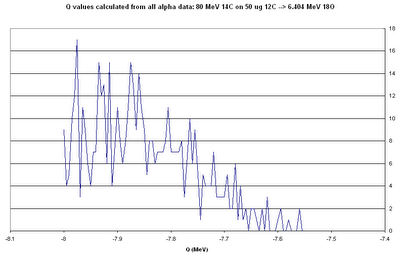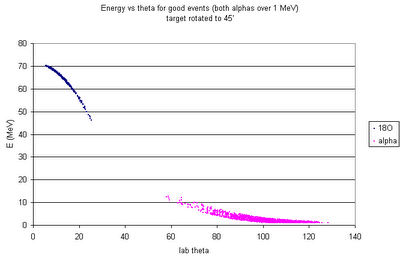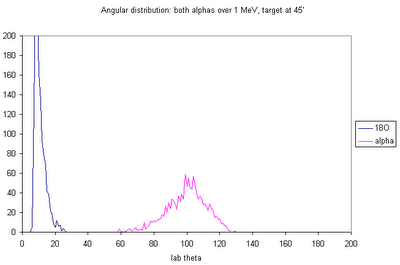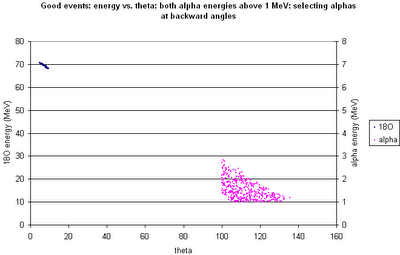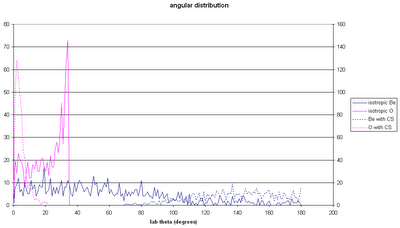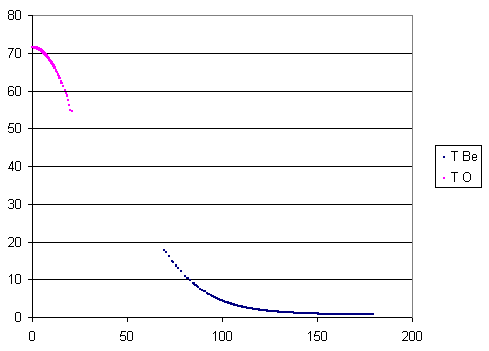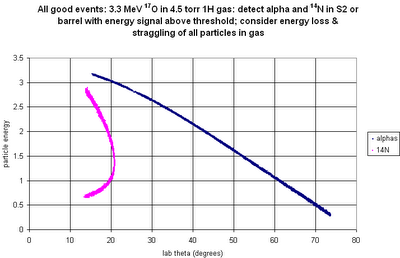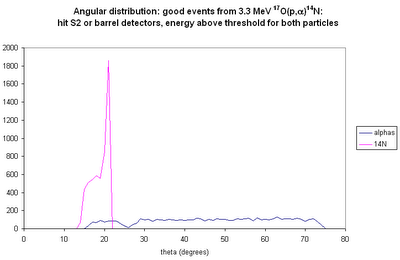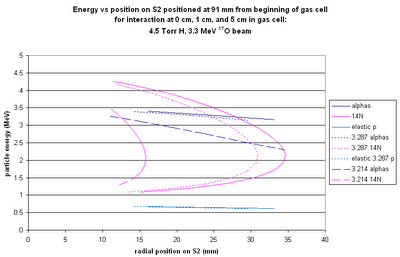Detector locations:
"rd={110,110,110,110,150}
thetad={70,110,70,110,15}
phid={109,109,71,71,270}"

Next step: use the same code (forget about energy loss in the target for now) to see where elastic scattering events hit--both 14C and 12C ejected from target. Just like we see online, most of the 14C hits are at forward angles in detector 1, and the corresponding 12C are in detectors 2 and 4 only.
The thing to note here is that the cross section function used here is purely rutherford--the angular distribution has no "wibbles" in it, to use an Alex-ism.
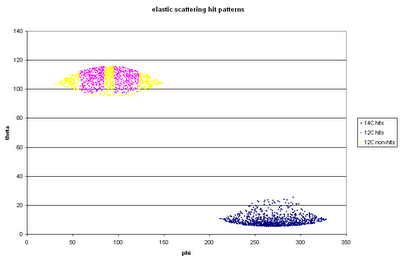
Now try also reproducing the plots of position in det 1 vs position in det 4: Here we get a smooth curve, whereas online there are two clumps. Either the "wibbles" are making their presence felt, or we're seeing reactions or something in addition to elastic scattering.
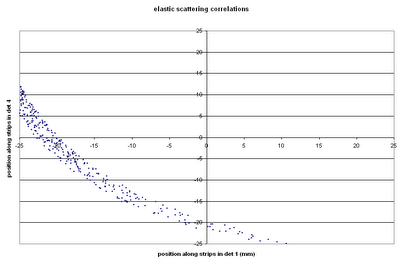
Now for reaction: 80 MeV 14C on 50 μg/cm2 12C: take into account beam spot size, energy loss/straggling in target and dead layer of detector. Hit pattern:
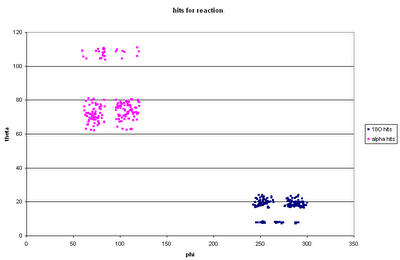
The gaps between the "quad" detectors mean that there are gaps in the "good" 18O hit pattern in detector 1.
Here's the energy vs. theta plot, too:
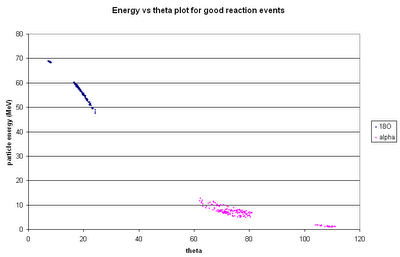
Note that both of these "reaction" plots are for good events only, i.e. for events for which the 18O and both alphas are detected and have energies such that the signals at both ends of the strip are above 500 keV. The good events are a small fraction of the total events: 156 total good detector hits for 93180 simulated decays.
10260 O hits; 9825 O hits above threshold
173 alpha hits above threshold
-->0.2% efficiency for good events, although 10.5% efficiency for 18O.
Update: If we move two detectors to 90', we'd get 0.8% efficiency! All we'd have to do is move one mount to 90' on the circular mount, and remove the unused detectors. It would certainly be worth doing this if we're going to run with only two detectors.
Here's the theta and phi ranges of the current quad configuration, together with real 18O hits and potential matching alphas. You can see that most of the potential alphas fall in the gaps between detectors.
